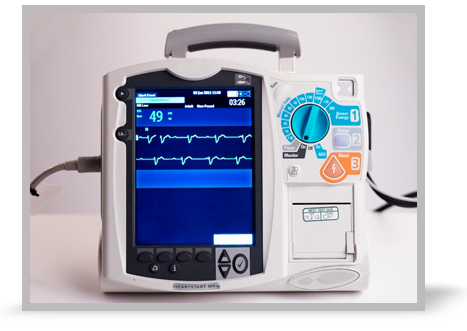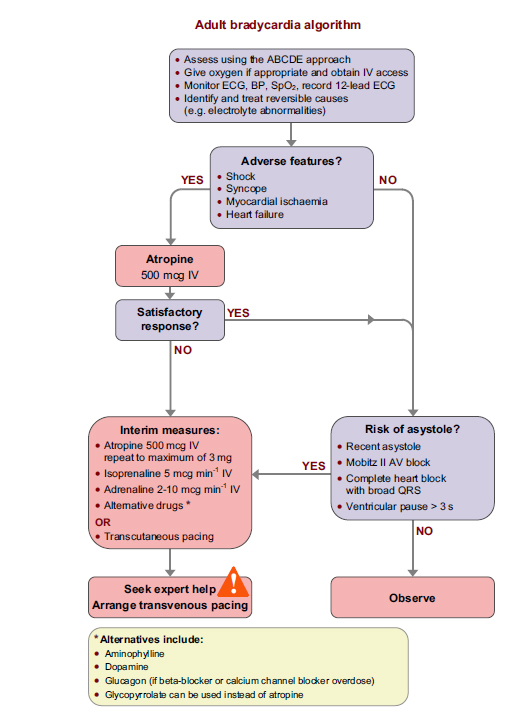
- Case study

This case study will look at a patient where you will need to:
- Be able to recognise bradycardia and differentiate between the different degrees of heart block
- Understand the principles of treating bradycardia
- Understand the indications for cardiac pacing.
The bradycardia algorithm can be accessed at any point via the algorithm tab.
The 6-stage approach and other information will be available in the Essentials tab.
Select Next to continue.References
Essentials: The 6-stage approach
1. Is there any electrical activity?
2. What is the ventricular (QRS) rate?
3. Is the QRS rhythm regular or irregular?
4. Is the QRS width normal (narrow) or broad?
Any cardiac rhythm can be described accurately and managed safely and effectively using the first four stages.
[hrule]
5. Is atrial activity present? (If so, what is it: Typical sinus P waves? Atrial fibrillation? Atrial flutter? Abnormal P waves?)
6. How is atrial activity related to ventricular activity? (e.g 1:1 conduction, 2:1 conduction, etc, or no relationship)
Algorithm: Adult bradycardia algorithm

